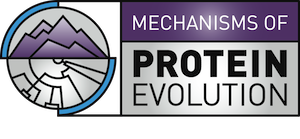Speaker Biographies
Confirmed Speakers for the Fall 2015 Meeting
Jensen Keynote: Patsy Babbitt, University of California, San Francisco

Jacob Keynote: Anne-Ruxandra Carvunis, University of California, San Diego

Dobzhansky Keynote: Belinda Chang, University of Toronto

Davidson Keynote: Cassandra Extavour, Harvard University

Cassandra Extavour is Professor of Organismic and Evolutionary Biology, and of Molecular and Cellular Biology. She trained in Drosophila genetics with Antonio Garcia-Bellido at the autonomous University of Madrid as a graduate student, and in comparative arthropod development with Michael Akam at the University of Cambridge as a postdoc. Her research focuses on the evolution of developmental mechanisms and cellular behaviours that establish germ cells and reproductive systems in animals. More broadly, she is interested in the origin and evolution of genes, proteins, gene networks and molecular mechanisms that determine early cell fate decisions in multicellular development. Her group uses multiple different model organisms to perform comparative analysis of development, using approaches from developmental genetics, classical embryology, bioinformatics, biochemistry and molecular evolution.
Ohta Keynote: Richard Goldstein, University College London

Research in the Goldstein lab focuses on computational modelling of molecular evolution, with an emphasis on proteins and viruses. In order to understand the properties of proteins – how they fold, what determines their stability, how they interact – we need to investigate the evolutionary processes that determined their form and function. Conversely, the evolution of proteins cannot be understood without considering how their form and function constrain the evolutionary process. Finally, the evolutionary record encodes the history of these proteins, providing important clues about their properties, roles, and interactions. Decoding this record requires an understanding of the underlying process of molecular evolution, how genes and proteins respond to varying, multifaceted selective pressures given their various biophysical, biochemical, and functional constraints.
Zuckerkandl Keynote: Joanna Masel, University of Arizona

Joanna Masel is an evolutionary theorist interested in the robustness and evolvability of biological systems. A theme is the prevalence of errors at the molecular level, and the evolutionary consequences of their inevitable costs. The de novo origin of coding sequences is a major empirical application for this theory, as is the action of the yeast prion [PSI+] as an evolutionary capacitor. She also studies the tension between relative and absolute competitions in evolution, ecology, and economics. Her lab uses a combination of mathematical, computational and bioinformatic approaches.
McClintock Keynote: Mary O’Connell, University of Leeds

Menton Keynote: Carrie Olson-Manning, University of Chicago

AC Wilson Keynote: David Pollock, University of Colorado School of Medicine

David Pollock first became interested in molecular evolution while doing a BA in Biochemistry from UC Berkeley with Allan Wilson. He later got a PhD in Biological Sciences from Stanford University (with Ward Watt and Marcus Feldman) and had postdoctoral fellowships that sent him to the National Institute for Medical Research in London, UC Berkeley, and Los Alamos National Laboratory. Dr. Pollock’s laboratory in the Department of Biochemistry and Molecular Genetics studies the relationship between structure/function and sequence evolution. They also have a focus on comparative vertebrate genomics, particularly the genomics of snakes. Molecules of interest include proteins in general, transcription factors and their binding sites, mitochondrial genomes, transposable elements, and microsatellites.
Douglas Theobald, Brandeis University

Douglas Theobald’s lab at Brandeis University is interested in diverse unresolved problems in molecular evolution, including: What are the mechanisms by which new functions evolve? What are the physical constraints on protein evolution? Are ancestral enzymes functionally promiscuous? Does specificity increase during evolution? To what extent is evolution adaptive or due to chance events? How many substitutions are required for evolution of a new function? Do novel functions evolve by small or large increments? What is the importance of correlations among mutations (epistasis)? The answers to these questions have broad implications for understanding the protein structure-function relationship, including rational efforts to design (and redesign) proteins for particular functions.
Pauling Keynote: Claus Wilke, University of Texas, Austin

Claus Wilke received his PhD in Theoretical Physics from the University of Bochum in Germany in 1999. He was a postdoc in the Adami lab at Caltech from 2000 to 2005, where he received training in biological physics, evolutionary biology, and artificial life. Dr. Wilke currently works on problems in computational evolutionary biology, bioinformatics, and structural biology. All his research is theoretical or computational, but he frequently collaborates with experimental groups. Much of his research addresses questions of molecular evolution, in particular about the evolution of viruses and the biophysical mechanisms of protein evolution. Other areas of interest are systems biology, metabolic modeling, and biostatistics.

Recent Comments